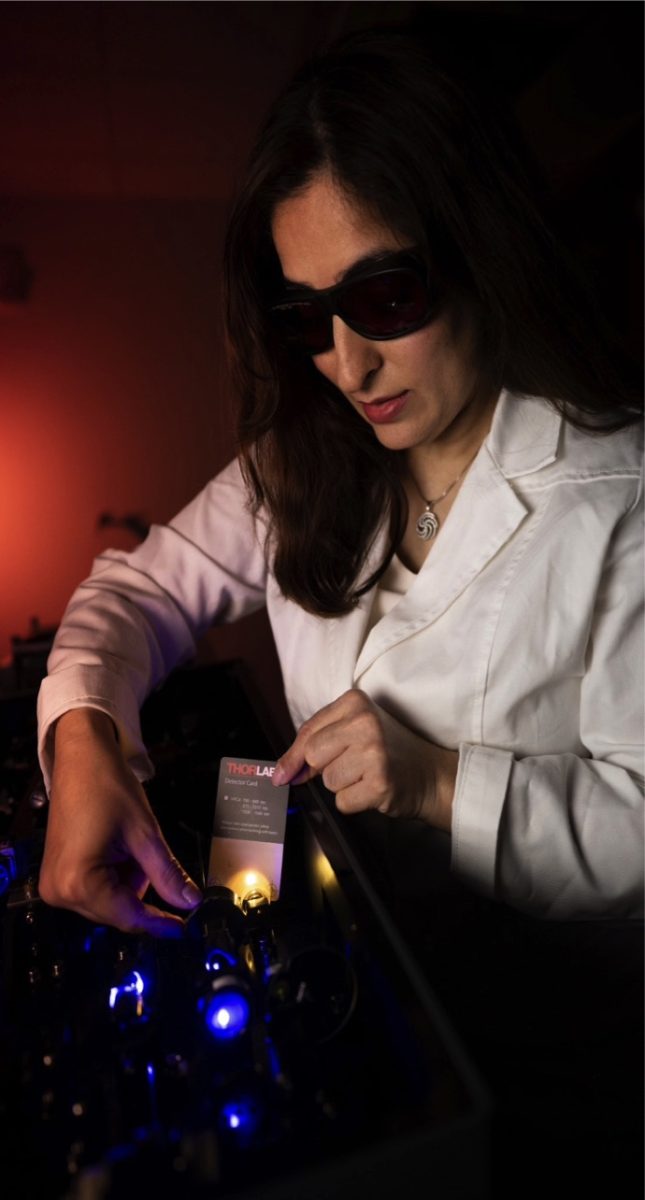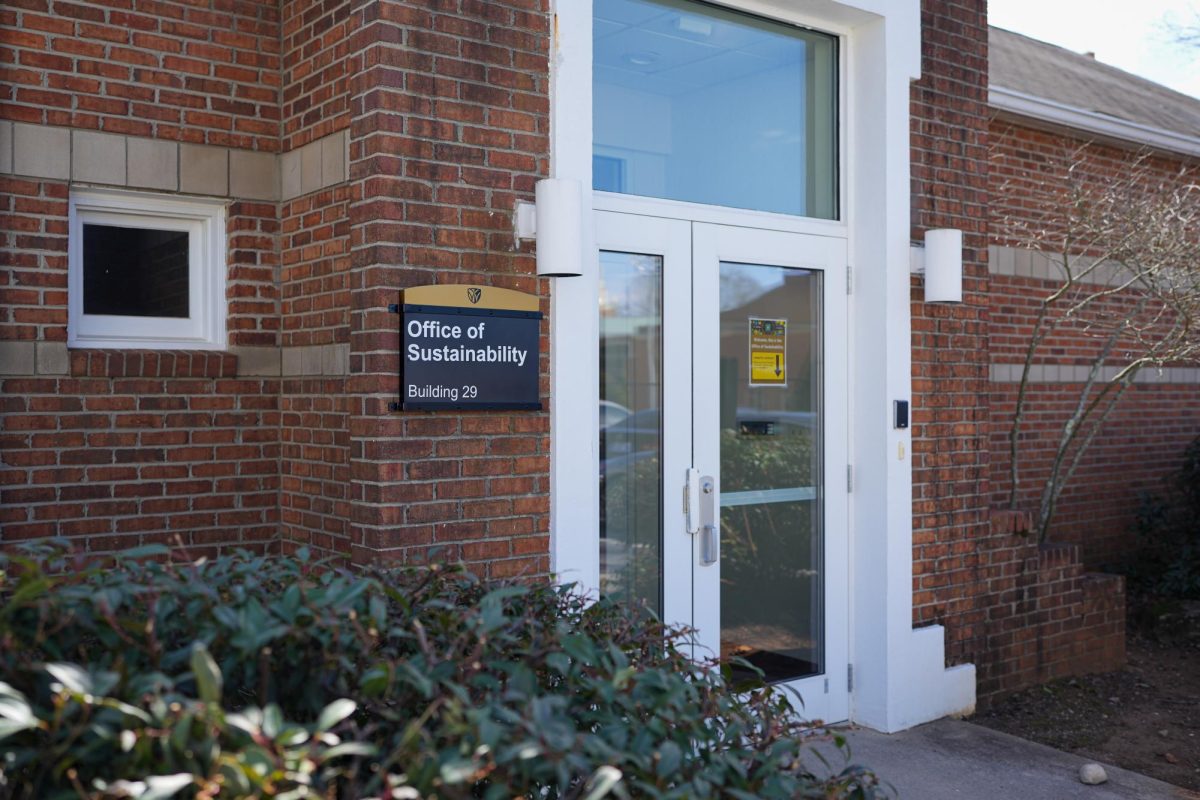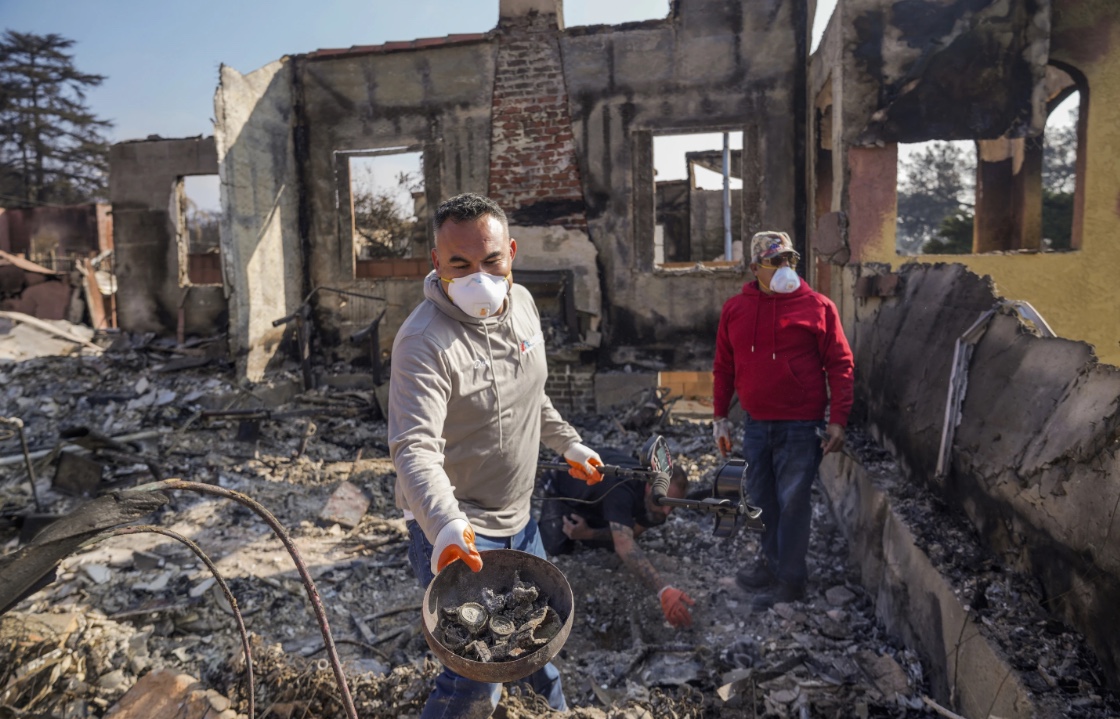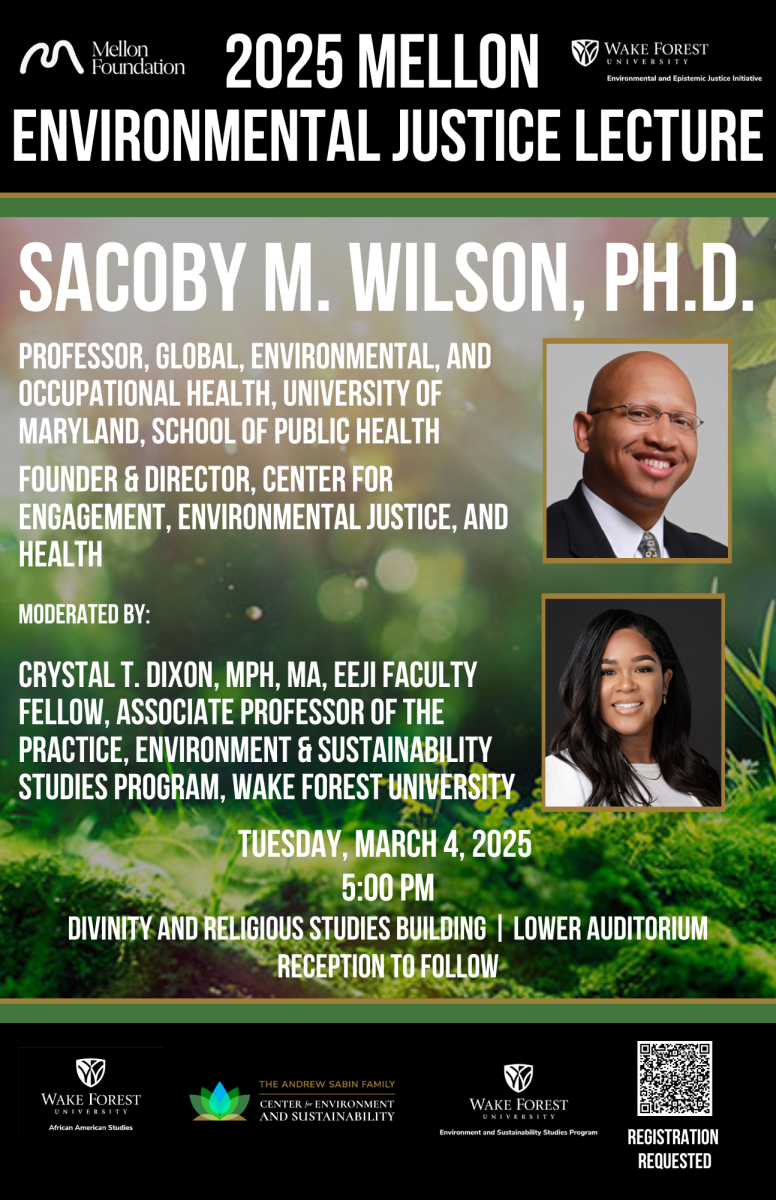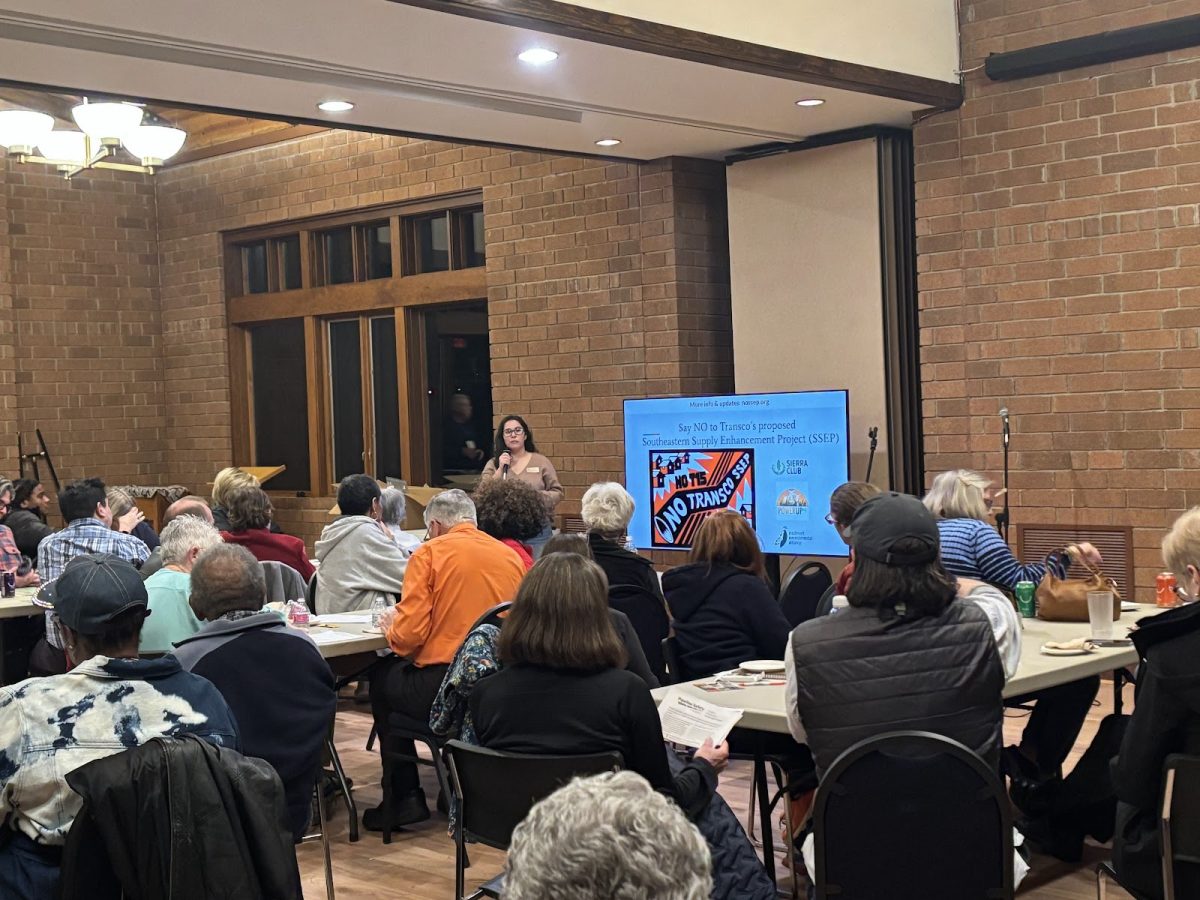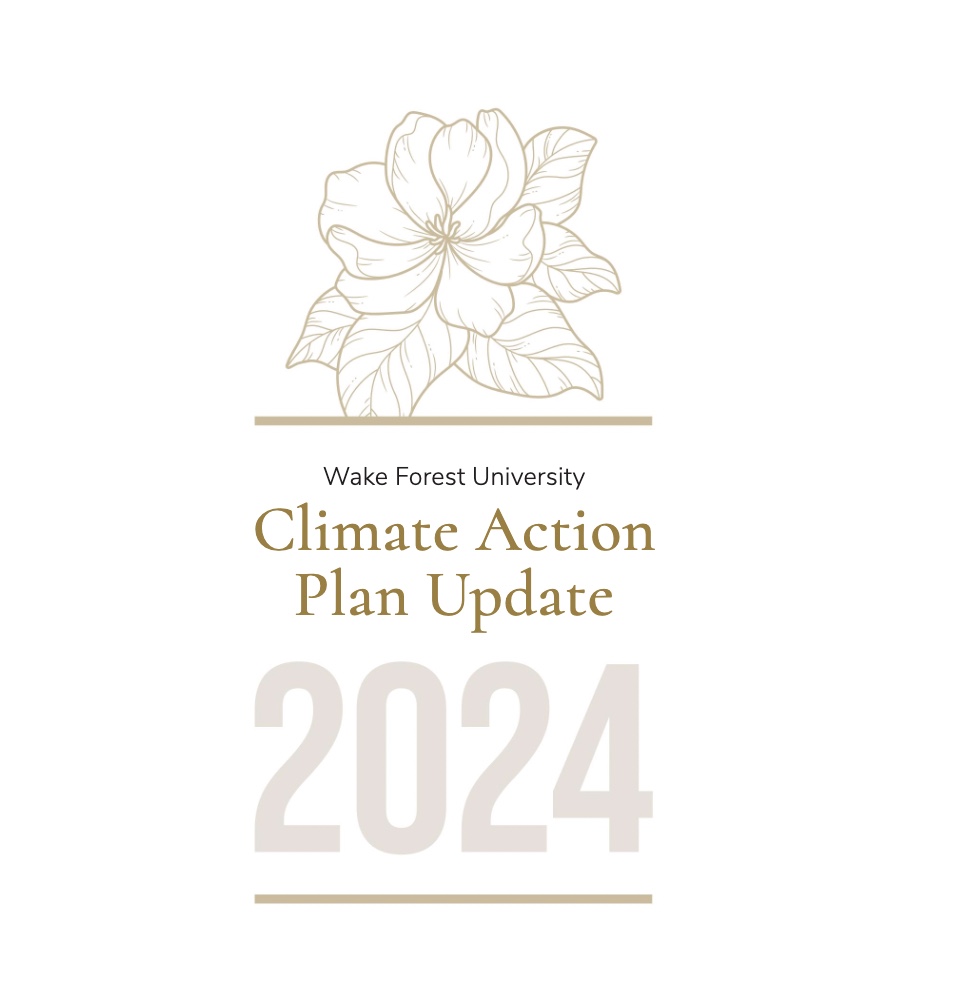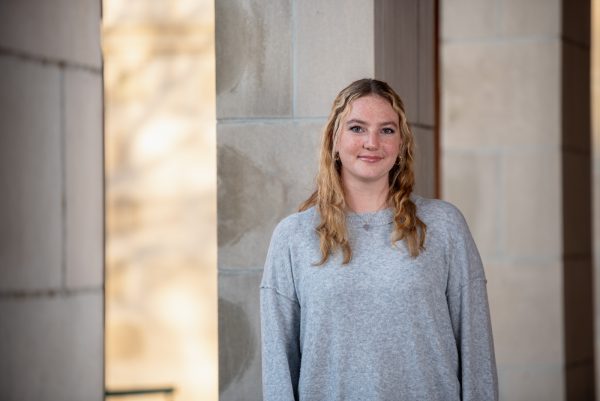Tucked away in the basement of Salem Hall, the Wake Forest Chemistry Department laboratories might all appear the same. Ventilation hoods, chemicals and glassware decorate the black counters of the rooms, with microscope slides and beakers scattered across each surface.
Dr. Elham Ghadiri’s lab is seemingly no different, with the subtle exception of a doorway leading to a private room where two large metal boxes rest atop a table. While inconspicuous to the untrained eye, these boxes contain state-of-the-art lasers that represent the future of sustainable energy research, made possible by a $650,000 National Science Foundation (NSF) grant.
Ghadiri, Assistant Professor and Principal Investigator within the Chemistry Department, is at the forefront of the global push to generate sustainable alternative energy sources. Her research focuses on harnessing energy produced from photochemical processes as a low-emissions energy source that can be integrated into infrastructure and technology.
In her lab at Wake Forest, which received a 2023 NSF Early CAREER Award grant, Ghadiri, along with her graduate and undergraduate students, uses laser technology to examine photocatalytic reactions — or chemical reactions that derive energy from the sun — to improve the efficiency of energy conversion devices. At a time when the world is in search of emissions-free energy sources, Ghardiri is working to produce one.
“We use ultrafast laser systems because when we make such devices, the process that results [in the] conversion of solar cells into electricity is complex. There are a range of chemical or physical processes that happen… they happen in millionths or billionths of a second,” said Ghadiri. “So, if we want to make a good device, we should have a good understanding of these processes that are actually happening very fast.”
These fast-paced processes occur during photocatalytic reactions that take place within a diverse array of organic and synthesized materials. As Ghadiri described, the ability to use multiple reactants to generate energy makes this technology both versatile and promising.
“The good thing about this platform is that there is not a single source… you could integrate multiple materials into this concept,” said Ghadiri. “Some of them are biomimetic materials, even natural pigments. Some of them are prepared… by chemicals in the lab,” she added.
The lasers that the Ghadiri Lab acquired through the NSF grant are integral in improving the efficiency of energy conversion reactions so that this technology can be implemented in devices within larger-scale applications.
“We use our ultrafast laser lab to understand the mechanisms and the performance aspects of these devices… and to be able to understand them is important so that we can control them and we can design them better,” Ghadiri said.
Dr. Ghadiri’s research could revolutionize the way solar energy is harnessed by enhancing the efficiency of solar panels and decreasing their dependence on rare earth metals, which are generally considered unsustainable materials.
“It’s not like there’s one thing that we’re going to rely on to move to a sustainable energy economy, there has to be movement on all fronts,” said Dr. Stan Meiburg, Executive Director of the Andrew Sabin Family Center for Environment and Sustainability and former EPA Deputy Administrator.
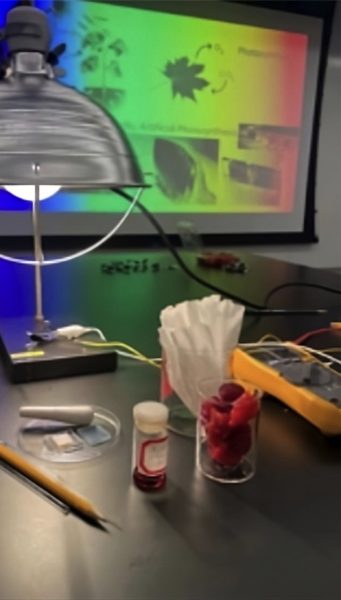
Meiburg not only underscored the importance of Dr. Ghadiri’s work but also the significance of the lab’s research in the context of Wake Forest’s cross-departmental mission for a sustainable future.
“This is a good example of one of the things I hope to do with the Center for Environment and Sustainability,” said Meiburg, “which is to get the knowledge about what’s going on in places around Wake Forest more widely available. There’s great stuff going on all around the campus.”
Ghadiri’s passion for this work is evident in her research and her role as a professor and mentor. Since the beginning of her time at Wake Forest, Ghadiri has worked to strengthen student understanding of this budding field by creating a chemistry course titled Nanochemistry in Energy and Medicine.
“Putting all this into a lecture and developing a new course was something that I love [and] that I initiated since the day I joined here,” said Ghadiri. “I immediately started proposing this new course to the university, and I am grateful that it got approved.”
In addition to teaching the course, Ghadiri has several graduate and undergraduate student researchers who work alongside her in the lab. As the students expressed, this research represents hope for a more sustainable future.
“This process will take time, but in the future, it can be used at a very large scale,” said Maha Sharif, a graduate student researcher in the Ghadiri lab.
John Skelton, an undergraduate student researcher, echoed this sentiment.
“As younger people, we have higher stakes in this field of research. The earth is not doing too hot right now — or doing really hot, is maybe the problem — so we need to consider the future,” said Skelton.
For Ghadiri, this statement rings true.
“I have passion for this type of research. And it has been my long lifetime dream to have my own laser,” Ghadiri said. “I am very grateful for having this platform, to provide this to my students and now train the next generation — so the research is going in a very rewarding direction.”



